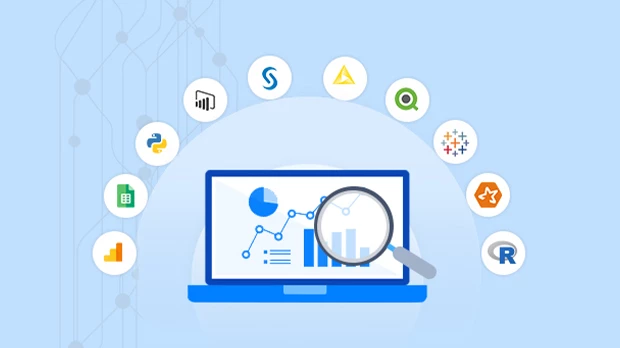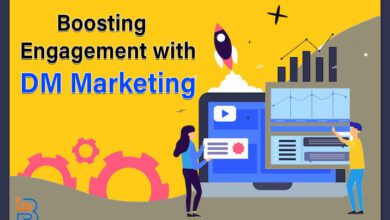How to Define Your Target Audience? Complete Guide

The target audience is the main and foremost component of any marketing or business strategy to acquire better outcomes. Businesses must stay focused on their introductory features to maintain their customers and enhance a yearly profit margin. The target audience should incorporate those people who are most likely to be interested in whatever it is that you are selling. In crafting an appropriate marketing strategy, identifying and profiling the targeted audience is paramount. This is a complete guide on getting your target audience and why you should define them.
Why Define Your Target Audience?
You need to define your target audience to get better outcomes. Here, you will get to know some essential points to identify your target audience:
Precision in Marketing
Defining your target audience allows you to make your marketing efforts with precision instead of casting a wide net and hoping to catch the attention of potential customers. You may focus on specific demographics, interests, and behaviors of audiences. This targeted approach increases the likelihood of engaging individuals who are genuinely interested in what you offer.
Efficient Resource Allocation
You should comprehend that understanding your target audience enables you to allocate your resources more efficiently. Whether budgeting for advertising, creating content, or developing products, having a clear picture of your audience helps you make investments. This efficiency is vital for the sustained growth of your business. In this way, your energy will be utilized effectively, and in reward, you will get better outcomes.
Better Communication
When you know your audience, you can speak their language and convey your message correctly. It is essential to craft messages that resonate with their values, needs, and preferences and foster a stronger connection. Effective communication builds trust and brand loyalty, turning one-time customers into repeat buyers and advocates for your brand.
Steps to Define Your Target Audience
It is essential for you to take notes on how you can create your target audiences. Here, you will get a step-by-step guide to define your target audiences:
10 Steps for Conducting Market Research to Define Target Audience
- Analyze Your Current Customers
- Study Your Competitors
- Use Surveys and Feedback
- Create Buyer Personas
- Segment Your Audience
- Utilize Analytics Tools
- Test and Refine
- Monitor Social Media
- Consider the Customer Journey
- Stay Adaptable
Analyze Your Current Customers
You should start by examining your existing customer base. Identify common characteristics among your most loyal customers. This includes demographics (age, gender, location), psychographics (interests, values, lifestyle), and behavioral patterns (buying habits, frequency of purchase).
Study Your Competitors
Analyze the customer base of your competitors. What demographics are they targeting? Are there untapped segments in the market that you can cater to more effectively? Learning from your competitors’ successes and mistakes can provide valuable insights. Answers to these questions are essential to find how they are surviving.
Use Surveys and Feedback
Keep in mind that direct feedback from your audience is invaluable to make adjustments. You should conduct surveys or collect feedback through social media and customer support channels. Ask about their preferences, pain points, and what they value in a product or service. This first hand information can influentially shape your understanding of your audience.
Create Buyer Personas
A buyer persona is a semi fictional representation of your ideal customer based on market research. Moreover, it indicates the lack of real data about your existing customers. It goes beyond demographics to include details like job roles, goals, challenges, and buying motivations. You can create one or multiple buyer personas to guide your marketing efforts with a more personalized touch.
Segment Your Audience
You should understand that not all customers are the same. Segment your audience based on common characteristics. This may involve creating various buyer personas or categorizing customers into groups based on behaviors or preferences. By understanding the unique needs of each segment, you may tailor your marketing strategies accordingly.
Utilize Analytics Tools
Keep using analytics tools to gather data on your website visitors, social media engagement, and other online interactions. Platforms like Google Analytics, Facebook Insights, and customer relationship management (CRM) systems provide valuable insights into the demographics. Further, it is able to provide insights into the behaviors of your audience.

Test and Refine
Your understanding of your target audience is dynamic all the time. It evolves with time and the experience of your business. You are allowed to implement A/B testing in your marketing campaigns to gauge audience responses. Monitor analytics regularly and be open to refining your target audience definition based on new data and insights.
Monitor Social Media
Social media platforms are rich sources of information about your audience. Analyze the demographics of your followers, engage in conversations, and pay attention to trends and discussions in your industry. You are allowed to use Social listening tools that may assist you in tracking mentions of your brand and relevant keywords. In this case, you are able to employ an efficient marketing strategy.
Consider the Customer Journey
It is essential to understand the different stages of the customer journey, from awareness to purchase and beyond. You may tailor your messaging and content to address the specific preferences and concerns of your audience at each stage. This makes sure a consistent and compelling experience that guides them towards conversion. It is the way in which you may build effective and practical strategies to employ and acquire success.
Stay Adaptable
The business terrain is dynamic, and consumer preferences also change rapidly with time. You should stay adaptable and be willing to adjust your target audience definition as required. Regularly revisit your market research and analytics to ensure that your strategies remain aligned with the evolving needs. This will enhance the impact of your strategies on the market to boost conversion rates.
Final Verdict
Defining your target audience is not a one time task; it’s an ongoing process that requires attention, analysis, and adaptability. By understanding your audience, you can create more effective marketing campaigns and ultimately drive the success of your business. Invest in thorough market research, create detailed buyer personas, and continuously refine your strategies based on real data. In doing so, you will position your business to thrive in a competitive and ever changing marketplace.






